Author : Barry Thompson
CHESAPEAKE CAT
Dave Pachoud and his team of craftsmen at Pachoud Motor Yachts have gained an enviable reputation for building quality powercats and their latest, the Roger Hill designed Sea Star, is another outstanding example of their work. Custom built for American Jim O’Hare, Sea Star is a 16.4 m semi displacement powercat that will be based in Annapolis on the shores of the beautiful Chesapeake Bay.
The relationship between owner and designer was established many years ago when Hill first met O’Hare while working for the Bruce Farr design office in Annapolis. While in Auckland for the last America’s Cup, O’Hare contacted Hill and discussed the idea of a new powercat to take back to the USA. The boat had to be able to cruise the East Coast of the USA and be appointed for both day cruising and passage making. Sea Star, a raised pilothouse motor yacht, is the result of those discussions. Launched in late July it represents another brilliant example of a builder, designer and owner working together to achieve the desired result.
Perfection has been pursued right throughout the project, with the style, finish and engineering reaching the extremely high standards that we have come to expect from this builder/designer collaboration.
All timber joinery is cherry with a 75% gloss, with teak and holly used in various high traffic floor areas such as the stair treads and galley. The boat is fully air conditioned with a split DX system that is zoned individually, with louvered cherry timber vent panels set strategically in every room in Sea Star. The attention to detail throughout the boat is inspiring.
The main deck area is based on the tunnel roof and houses the helm, galley and dinette areas in an open plan layout. All accommodation is in the wide hulls with a three-cabin layout.
The forward helm is offset to port with a generous fascia to cope with the two computer screens that utilise a Seamation programme to display every function of the boat, from engine status to navigational information. With two PCs all systems can be cross-linked and overlaid to run on either computer. These are surrounded by carbon fibre panels catering for an array of instrumentation and switches. A fully adjustable Stidd helm seat provides an excellent driving position. The BEP switch panel and function board is obscured behind a dark glass panel, yet still handy and accessible. Passengers need not feel left out, with a large L-shaped settee alongside the helm.
The owners wanted a large galley that had all the comforts of home and was both practical and functional. With a four-burner stove, convection microwave oven, Sub Zero fridge draws, plus an F&P dish drawer there’s not much else required. Along with a trash compartment and copious storage and locker space, the galley is finished with a bench top of dark, almost black granite with cherry fiddles and trim. A sliding rear window provides a servery area through to the cockpit.
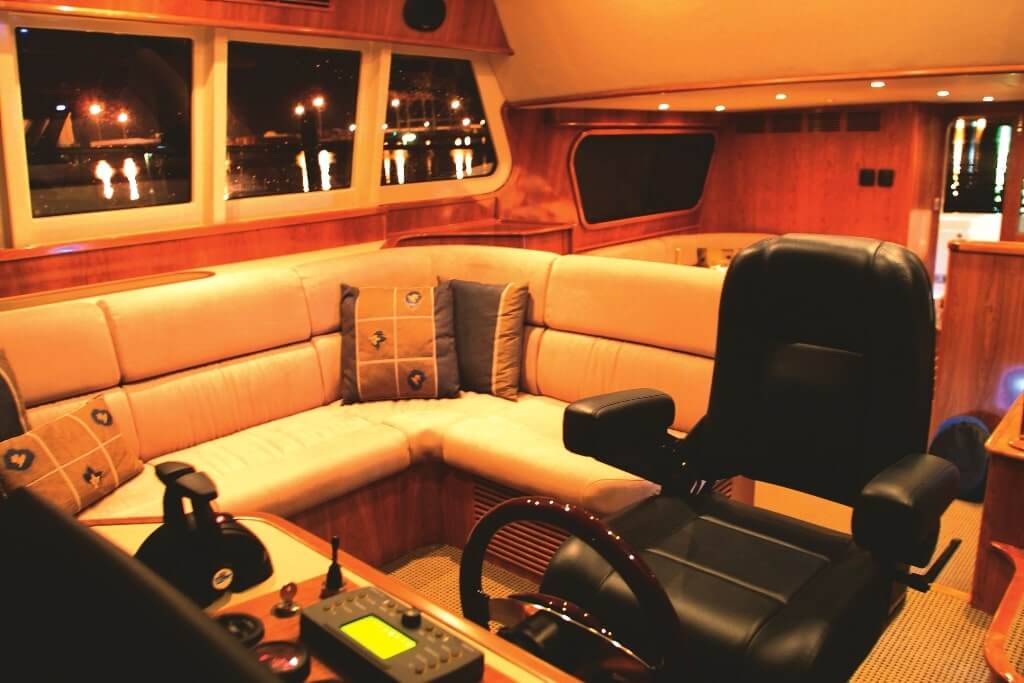
Opposite is the U-shaped dinette, with oatmeal coloured macro suede cushions that provide a handsome relief to the darker cherry panelling and the hand crafted swirl cherry table with a teak inlay and jarrah bullnose. Directly opposite is a pop up TV mounted into the side of the galley servery area. A full sound system can be individually operated from various sections of the boat and there are also flat screen TVs in the forward master and guests’ staterooms.
Between the raised pilothouse and the rear galley and dinette, semi circular stairways lead to the cabins where the master stateroom and two guest cabins are located. Cherry cabinets in both hulls offer additional storage areas, with a matted fabric trim providing a unique finish to the interior hull sides. Teak and holly are used on the floor areas of the companionways and accommodation areas.
The port hull features a well-equipped laundry aft with household size washer and dryer, plus a freezer and access through to the large battery bank. Forward is the master stateroom and ensuite area. The volume of the hulls and the area above the tunnel are surprisingly large and provide a classic powercat accommodation layout.

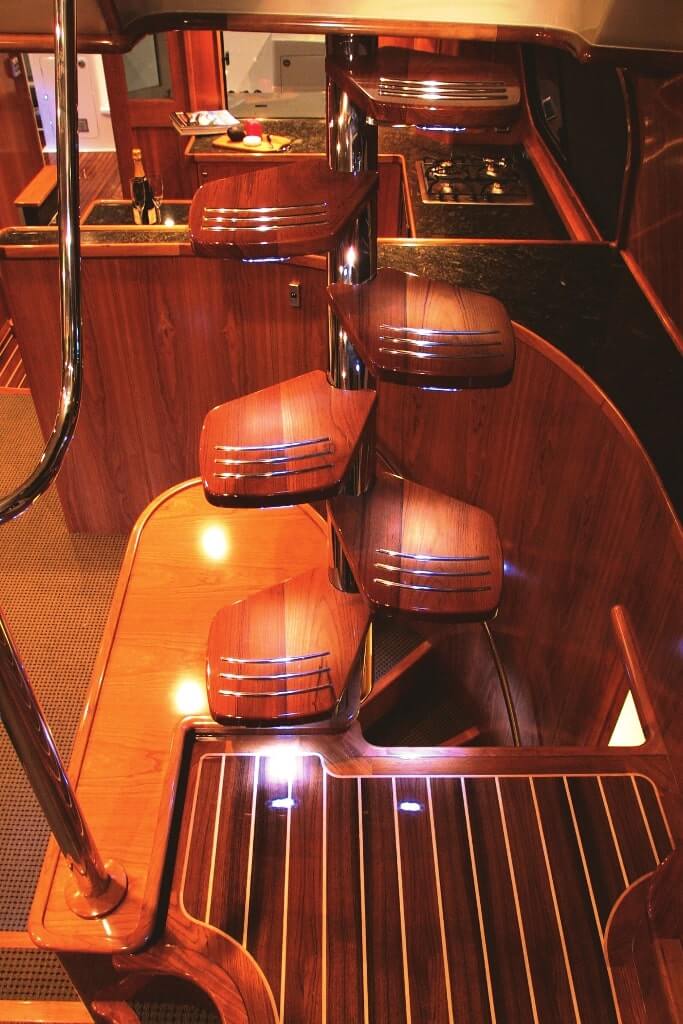
A large double berth is positioned athwartships, using the top of the tunnel as a base. A full inner sprung mattress sits on wooden slats to provide the ultimate in comfort for the owner and his wife. The scale of the stateroom is enhanced by the clever use of the space that alludes to a bigger area.
The starboard hull caters for the owner’s guests with two cabins, the aft complete with a large double berth that encompasses the entire width of the hull. A shared bathroom/toilet has twin access and can also be used as the day head for other guests. The forward guests’ cabin offers both a double bed positioned over the tunnel roof and a further single upper bunk – another example of clever use of space.
The owners wanted to keep the boat as quiet as possible, both underway and whilst at rest, so not only is there the usual sound proofing material in the obvious areas, but also the bulkhead between the two forward cabins has been given special attention.
Spending a lot of time aboard means that the owners required more than just an internal helm, so the flybridge area is certain to become one of the most popular areas aboard Sea Star. A central helm provides the necessary duplication of instruments, large computer display screen and controls and using a toggle switch, the skipper can manoeuvre the cat with consummate ease. A sandwich GRP hardtop is surrounded by removable clears, which was favoured by O’Hare as suitable for the Florida climate. A similar vessel built for colder climes would have a completely closed-in hardtop.
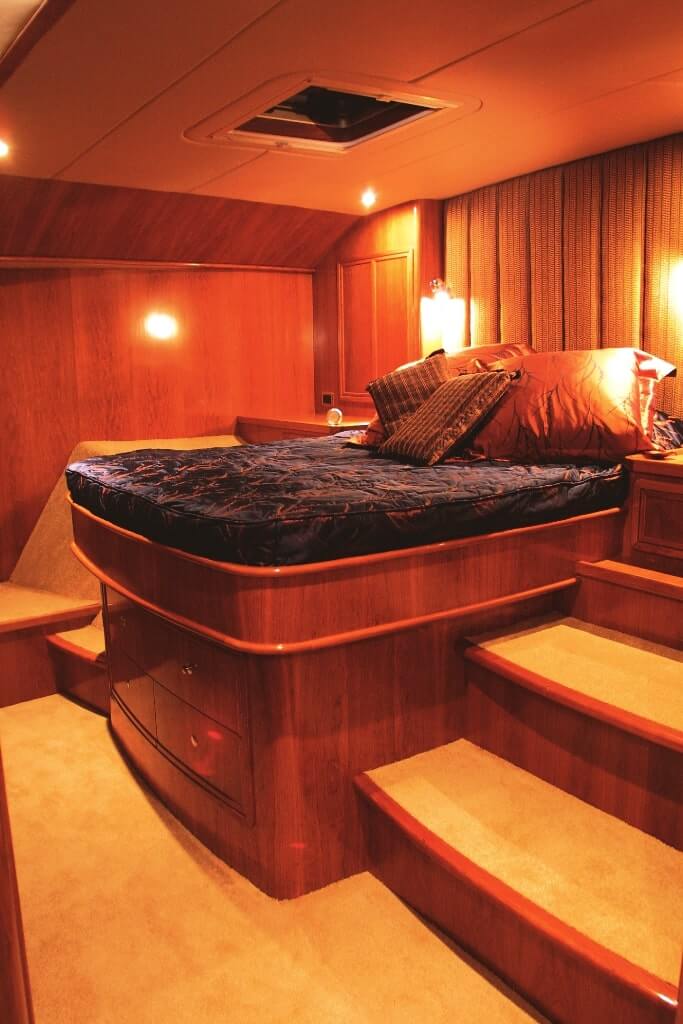
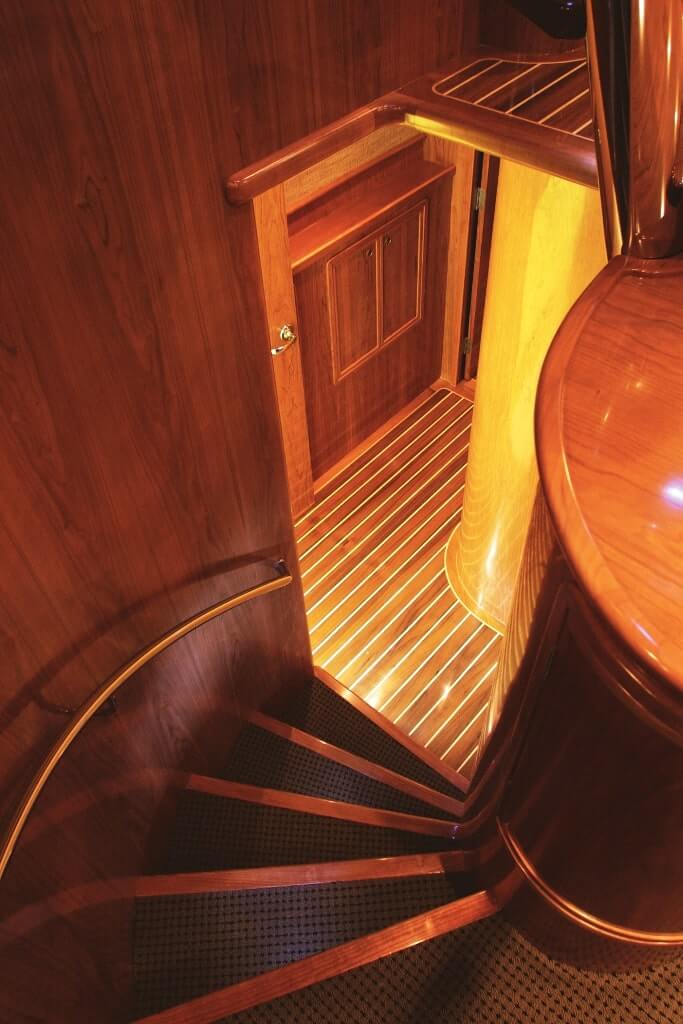
The open flybridge area leads past a large wrap-around settee and wetbar to the upper deck, which also accommodates the Avon tender and Oceanlift davit crane. An external stairway leads to the cockpit, with elliptical grab rails elegantly designed and practically perfect.

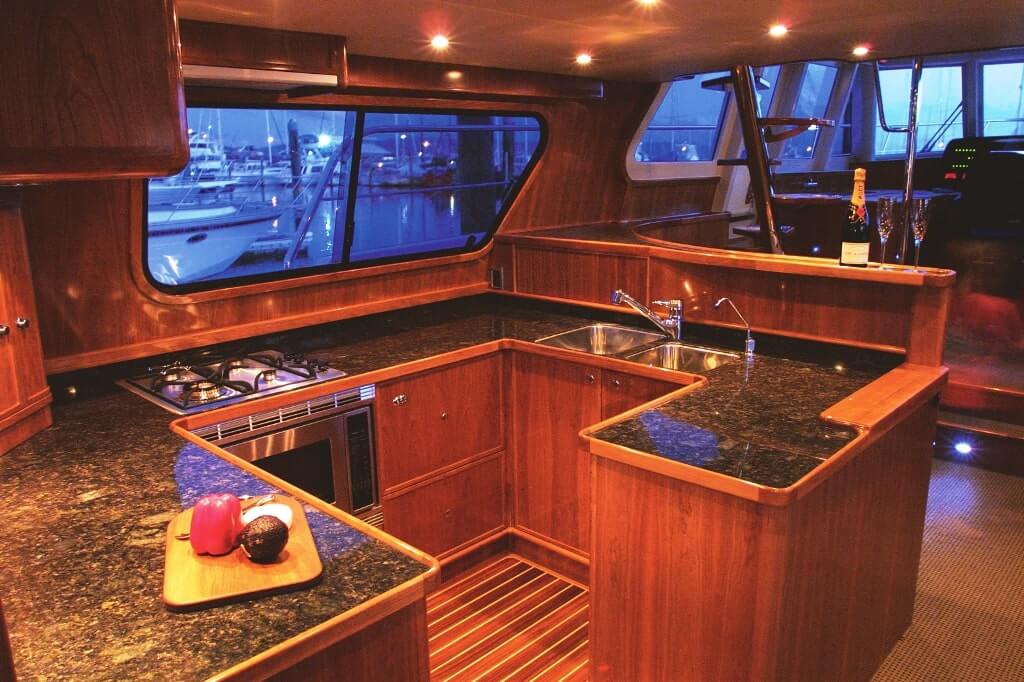
The cockpit adds a new social dimension to the boat and provides a workable area for barbecues and entertaining guests. Large floor hatches provide access to the engine rooms and lazarette, with access either side of an island settee to the huge full-width boarding platform. There is a day head/shower to starboard and large top-loading freezer on the port side.
Sea Star is powered by twin Cummins C450 engines through conventional drives and returns a top speed of 24 knots and a comfortable cruise of 18 to 20 knots. This is in fact a few knots above the design brief and in initial sea trials the performance and handling of the boat proved better than expected.
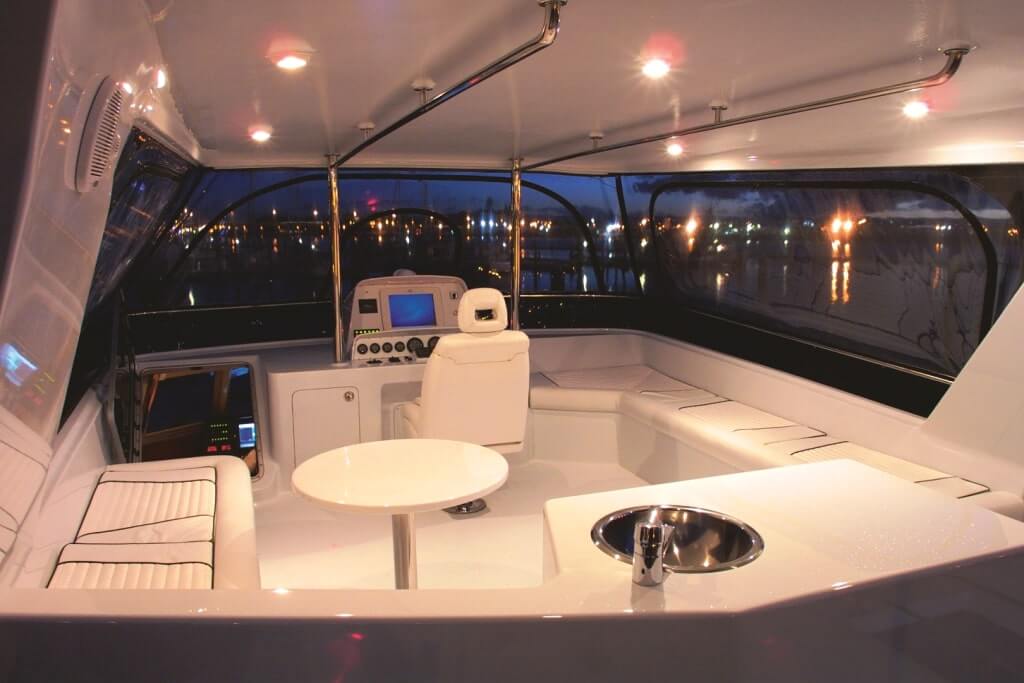
The engine rooms and hull design are more than capable of taking larger engines if required. Seaworth spray separators either side filter the engines’ intake air. Pachoud Motor Yachts has combined leading edge technology with common sense to provide an uncompromising standard in the engine rooms.
Sea Star is constructed all foam cored with E glass skins inside and out. This new design by Roger Hill is based on his proven hard chine, moderate deadrise, symmetrical hull form.
The last monohull built by Pachoud Motor Yachts was in 1997 and since then there has been a string of Roger Hill or Malcolm Tennant powercats for local and overseas owners. Sea Star is the third Pachoud built powercat to be sold into the USA, the other two being the 19.8 m (65ft) Wild Wind and 16.8 m (55ft) Ice Bear, both designed by Malcolm Tennant. Soon to follow are three more Tennant designs, at 25 m (82ft), 26 m (85ft) and a 17.7 m (58ft) sportfisher for a Hawaiian owner.
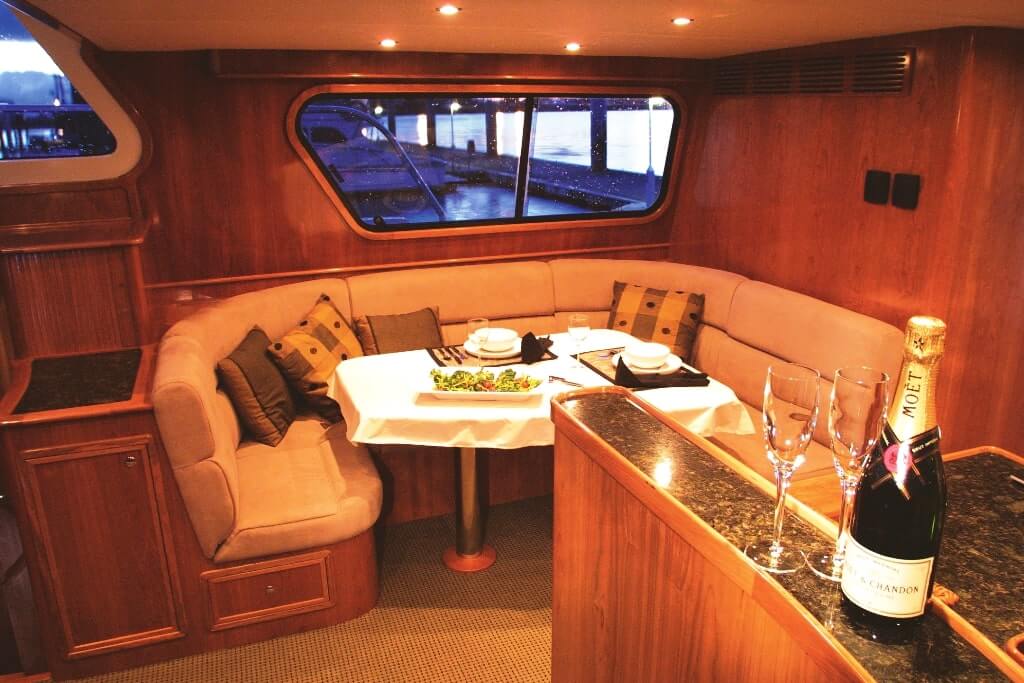

Two years ago Dave Pachoud said at the launching of Henry M, – a Roger Hill 16.5 m powercat – that he was confident the powercat concept had a big future and that anyone who spent some time aboard would appreciate the benefits. Sea Star epitomises that confidence.

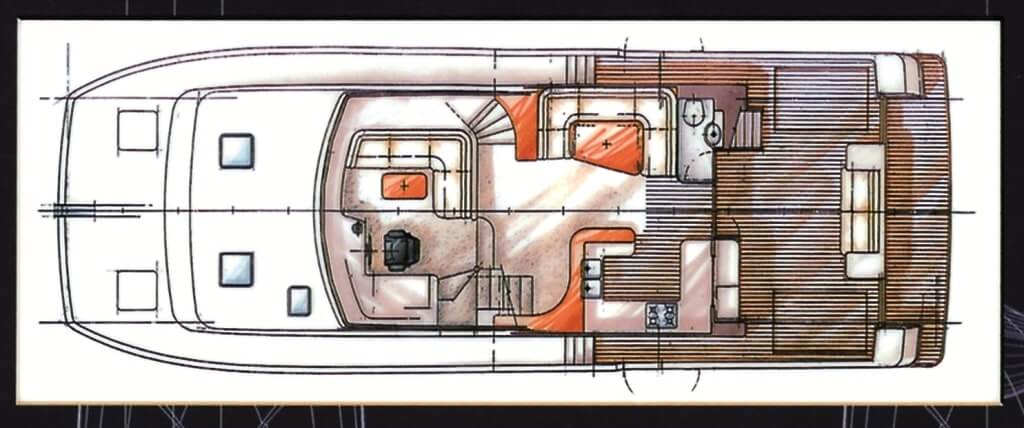
TECHNICAL SPECS
- Boat Name: Sea Star
- Design Name : 16.4m Hill Pilothouse
- Builder: Pachoud Motor Yachts
- Designer: Roger Hill Yacht Design
- Interior Design: Roger Hill / Anna Wells
- Year Launched : 2002
- LOA: 16.40m
- Beam: 5.99m
- Draft: 1.05m
- Displacement: 22800 kgs
- Max Speed: 25 knots
- Fuel Cap: 5260 litres
- Water Cap: 1100 litres
- Construction: Epoxy Composite
- Engines: 2 x Cummins C450




